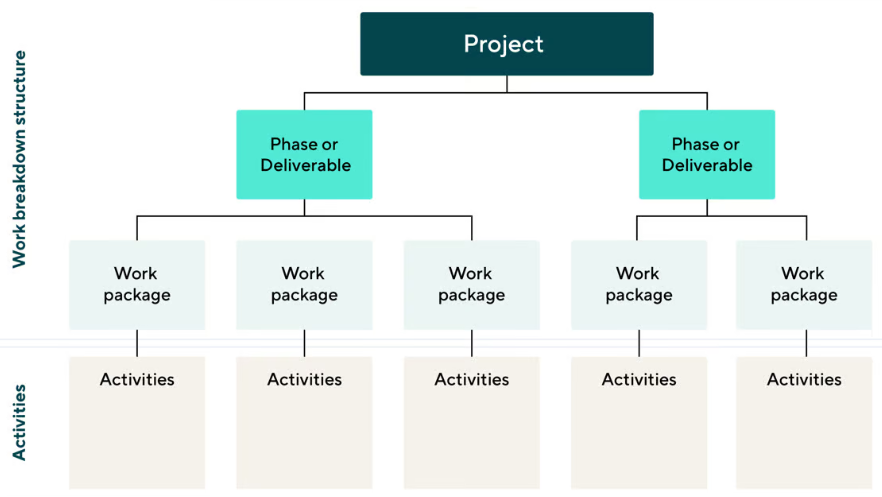Work-Breakdown Structure (WBS) Chart

What is a Work Breakdown Structure (WBS)? A Work Breakdown Structure (WBS) is a project management tool used to break down a project into smaller, more manageable components. It involves dividing the project into smaller, more manageable tasks or work packages, which are then broken down into even smaller, more detailed tasks.

Pros of a Work Breakdown Structure:
- Provides a clear understanding of the project: A WBS provides a clear and detailed understanding of the project scope and all of its components. This can help project managers to identify potential risks and opportunities, and to allocate resources effectively.
- Facilitates communication: A WBS can be easily shared with all team members and stakeholders, which facilitates communication and transparency throughout the project.
- Allows for better time and cost estimates: By breaking down the project into smaller, more manageable components, a WBS allows project managers to make more accurate estimates of time and costs.
Cons of a Work Breakdown Structure:
- Can be time-consuming: Creating a WBS can be a time-consuming process, especially for large and complex projects. This may be challenging for project managers who are working under tight deadlines.
- Can be too detailed: While a WBS provides a detailed understanding of the project scope, it may be too detailed for smaller projects that require less planning and oversight.
- May not account for dependencies: A WBS may not account for task dependencies, which can make it difficult for project managers to identify critical tasks and allocate resources effectively.